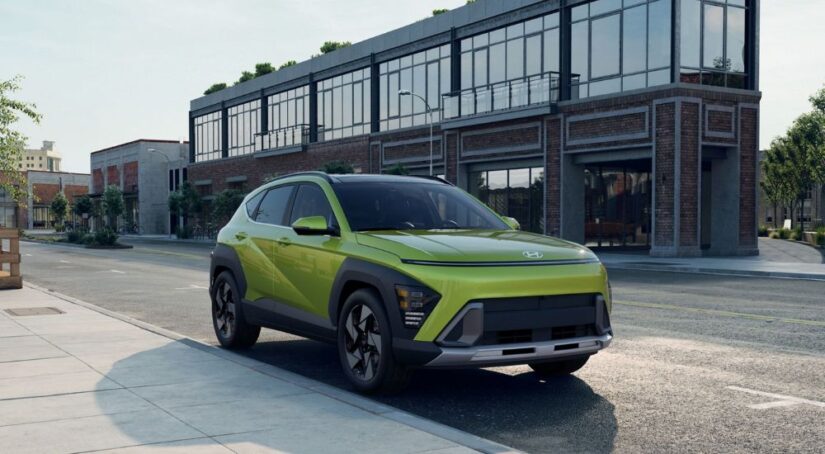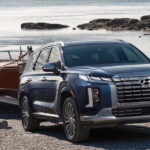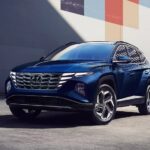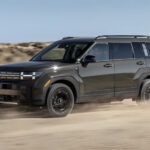Kailua-Kona is the second-largest settlement on the largest island of Hawaii. It is also a delicious Hawaiian blend of coffee that many coffee enthusiasts know and love. For those who favor cars over coffee, however, the name “Kona” means an exceptional subcompact SUV from Hyundai. Since its debut in 2018, drivers have been able to experience all that the Hyundai Kona has to offer, providing them with a wonderful blend of performance, fuel economy, and safety, all things a commuter wants in a daily drive. The 2025 Kona is the second year of this vehicle’s second generation, which gave the Kona a more assertive profile with a roomier interior and more advanced technology features. With a few more inches to its name, how does one improve upon the 2024 Kona?
While other brands would have been satisfied resting on their laurels after introducing a new generation of a successful vehicle, the folks at Hyundai didn’t rest, building on the success of last year’s model with the addition of two new trim levels and a host of expanded tech features. Now’s the best time to find a new Hyundai Kona for sale for those who want a subcompact SUV with a little extra. Let’s get into what these new features and trim levels entail and why the 2025 Hyundai Kona might be your next subcompact SUV.
New Year, New Trims
Usually, when an automaker introduces a new generation of a model, they don’t make many changes the following year. The idea is to wait and see how the market shakes out. However, that is not Hyundai’s approach, which was to build upon the trim choices available on the Kona.
Last year, the 2024 Kona came in four different trim levels. In addition to the entry-level SE, drivers could choose between the mid-level SEL, the sporty N Line, and the top Limited trim. For the 2025 Kona, Hyundai added two more trims to the selection, both slotted between the SEL and the N Line. The SEL Convenience adds paddle shifters to the transmission, standard heated front seats, LED interior lighting, and a navigation-controlled Smart Cruise Control system. The N Line S has been introduced as an equivalent to the SEL, allowing drivers to take advantage of the turbo 1.6-liter engine of the N Line but in a much more affordable package. Even without the luxury features of the SEL Convenience, the N Line S features some unique details from the upper trims, such as an ambient lighting feature that was only available in the top Limited trim in previous years. Adding two new trim levels and extending a standard feature shows that Hyundai always works to improve its models.
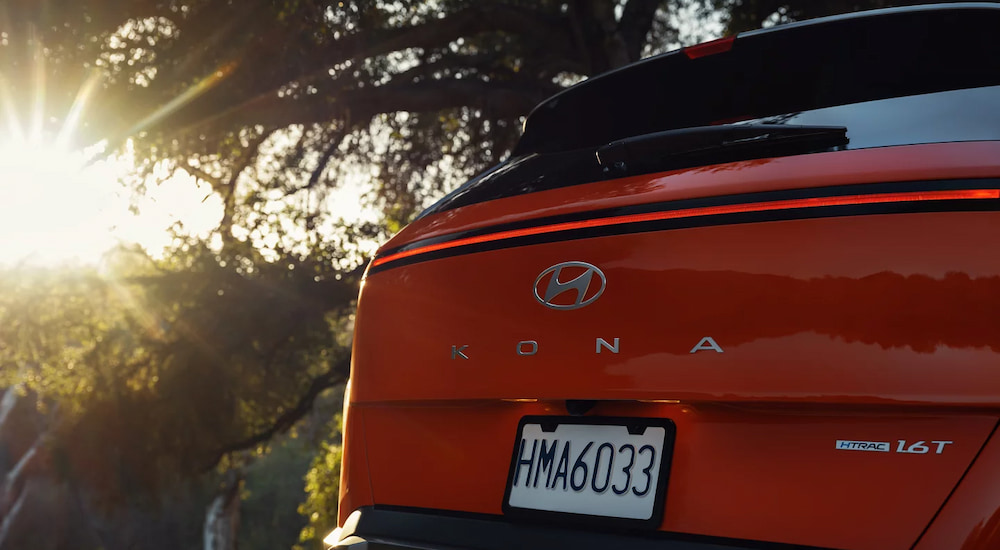
Two Great Powertrains to Choose From
Hyundai carries over the powertrain choices from the 2024 model, each of which are assigned to specific trims of the Kona. The SE, SEL, and SEL Convenience trims of the 2025 Kona come with a fuel-efficient 2.0-liter I-4 gas engine paired with a continuously variable transmission (CVT). Unlike an automatic transmission with set gear speeds, a CVT makes constant adjustments, giving drivers a smoother transition when accelerating, which can improve handling in situations where you need to brake and accelerate more frequently. If you opt for one of the higher trims, like the N Line, N Line S, or Limited, you get a smaller but more powerful 1.6-liter I-4 gas engine paired with an eight-speed automatic transmission. It benefits from a turbocharger, using direct fuel injection to provide up to 190 hp and 195 lb-ft of torque, which are no small numbers for an entry-level subcompact SUV.
Whichever model and engine you choose on the 2025 Kona, you will get a choice of front-wheel drive (FWD) for better fuel economy and HTRAC all-wheel drive (AWD) for improved traction, especially in inclement weather. The key difference between the two engines can be seen in performance and fuel economy. Choosing the 1.6-liter Turbo gives you exceptional acceleration, taking you from 0 to 60 mph in just 7.5 seconds. In contrast, the 2025 Kona with the 2.0-liter engine takes 9.2 seconds to reach 60 mph. However, you can get up to 31 MPG combined fuel economy with the 2.0-liter engine and FWD. The Turbo engine still has a solid fuel economy rating, an impressive 28 MPG combined, but it is not as fuel efficient as the SE, SEL, and SEL Convenience trims.
Subcompact Spaciousness
Many drivers who are considering a subcompact SUV are concerned about interior space. They hear the word “subcompact” and immediately worry about being cramped or not having enough room for passengers when they want to go out in their free time. With the Kona, the model is subcompact in name only, owing to size increases from the 2024 model year. In addition, Hyundai has done an exceptional job apportioning this space between the vehicle’s two rows of seats. While front-row passengers get 39.8 inches of headroom and 41.7 inches of legroom, those in the back can stretch out with 38.3 inches of headroom and 38.2 inches of legroom. This is why the Kona can lend itself to being a family vehicle and an exceptional commuter model.
You also get a very tasteful and comfortable interior on the 2025 Kona. The SE, SEL, and SEL Convenience models feature cloth seat trim, while the N Line S and N Line sport Black Alcantara fabric seats, and the Limited boasts a luxurious H-Tex leatherette trim on the seats. There’s plenty of room for your belongings, as well, with all models of the 2025 Kona giving you 25.5 cu.ft. of cargo space. If you need more room, fold down the rear bench seat to free up an impressive 63.7 cu.ft. of space for your belongings.
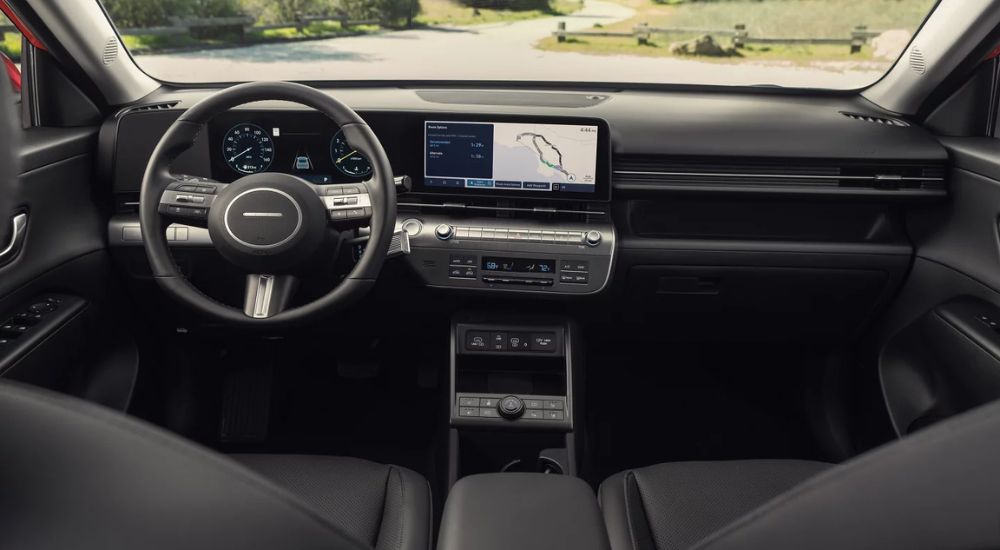
Advanced Technology to Keep You Safe and Connected
Hyundai has a well-deserved reputation for making models that excel in technology, and this is undoubtedly still the case with the Hyundai Kona. Each model comes standard with the Hyundai SmartSense suite of advanced driver assistance technology, which supports your driving with a host of automated safety alerts. One of these alerts is Blind-Spot Collision Warning, which helps you avoid a collision on the highway when changing lanes. When you signal, the system will notify you if another vehicle is traveling in the adjacent lane by signaling a warning. Similarly, the Lane Keeping Assist (LKA) on the Kona will keep you centered in your lane, preventing you from drifting if you get distracted during your drive. These features undoubtedly explain why the Hyundai Kona was named a Top Safety Pick+ by the Insurance Institute for Highway Safety.
The technology on the 2025 Hyundai Kona will not only keep you safe but will also provide you with entertainment and connectivity. The Kona comes with a standard infotainment system on an enormous 12.3-inch touchscreen. This will provide you with critical information in a format that is easy to see and navigate. The system has wireless Android Auto and Apple CarPlay, so you can connect your phones to the infotainment system without any need for charging cables, which lets you make hands-free calls and texts while streaming your favorite music apps. The 2025 Kona also has SiriusXM, providing you with the best in commercial-free music, talk, sports, news, and comedy. This gives you even more choices for entertainment.
If you are a true audiophile, you might want to consider the N Line and Limited trims. These feature an eight-speaker Bose Premium Audio System, which uses an external amplifier to provide exceptional sound when listening to music in your Kona.
Consider a Kona for Your Next Subcompact SUV
More options are always a good thing, and Hyundai has demonstrated that they aren’t afraid to make big additions to their models to promote a broader range of options. With a Kona, you can expect to find all that you love about the previous year’s model, but with even more features to enjoy and more evidence of Hyundai’s commitment to subtle luxuries. With six different trim levels and two drivetrains offering different benefits for different drivers, it is up to you to decide what your Kona might look like. Like its namesake, whether it be a city or a flavor of coffee, the Hyundai Kona is a beautiful, natural blend of everything we love to see in an SUV.
